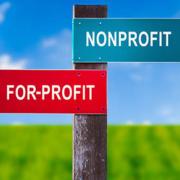Don’t let fraudsters ruin the most wonderful time of the year
The hubbub of the year-end giving season, combined with holiday absences, can make your not-for-profit vulnerable to fraud. You’ll need to be particularly vigilant if you generally rely more on volunteers this time of year, hold special fundraising events or intend to give gift cards to staffers and clients. Here’s what to look out for.
Care with cash
Charities generally are staffed by people who believe strongly in their missions. This typically contributes to a culture of trust, which can make nonprofits vulnerable to certain types of fraud. For example, staffers and volunteers may be trusted to accept cash, making it easy for crooked individuals to pocket it. So ensure that a manager supervises anyone who accepts cash donations and keeps meticulous records of all cash received.
If you’re holding a special event this holiday season, minimize the risk of cash theft by preselling or preregistering participants. Also make sure you’re set up to accept credit cards at your event — and encourage credit card payments. If you decide to accept cash at the door, assign cash-related duties to employees who’ve undergone background checks or to trusted board members rather than unsupervised volunteers.
Segregation of duties
Regardless of how busy staffers are processing donations and completing year-end tasks, they need to observe internal controls such as segregation of accounting duties. To reduce opportunities for any one person to steal, involve several employees in processing payables and receivables. For example, every incoming invoice should be reviewed by the staffer who placed the order to confirm the amount and that the goods or services were received. A different employee should be responsible for processing the payment. And a third person (or outside financial advisor) should routinely review your books for any anomalies.
If staffers who usually carry out these responsibilities are on vacation, enlist the help of executives and board members. Don’t cut corners or allow control overrides because you’re operating without a full staff. Instead, you might look for tasks you can put on hold until everyone is back after the holidays.
Gift card risk
Gift card fraud is another potential holiday season risk. If you plan to give gift cards to staffers or clients, be careful about where you buy them. In a scam known as “draining,” fraudsters obtain bar codes, PINs and activation codes by opening gift cards on store display racks. After the crooks reseal the cards, consumers buy and add money to them and the thieves spend the funds before gift recipients get a chance to.
Buy cards only from stores with good security — including security cameras on gift card racks. Also inspect cards for signs of tampering and promptly give them to your recipients, encouraging them to use the cards soon.
Holiday spirit
The period between Thanksgiving and New Year’s Day generally is a critical fundraising season. Don’t let fraud undermine all your hard work and eat into your nonprofit’s revenues — not to mention, ruin your holiday spirit. Contact us for help establishing or strengthening internal controls.
© 2024












